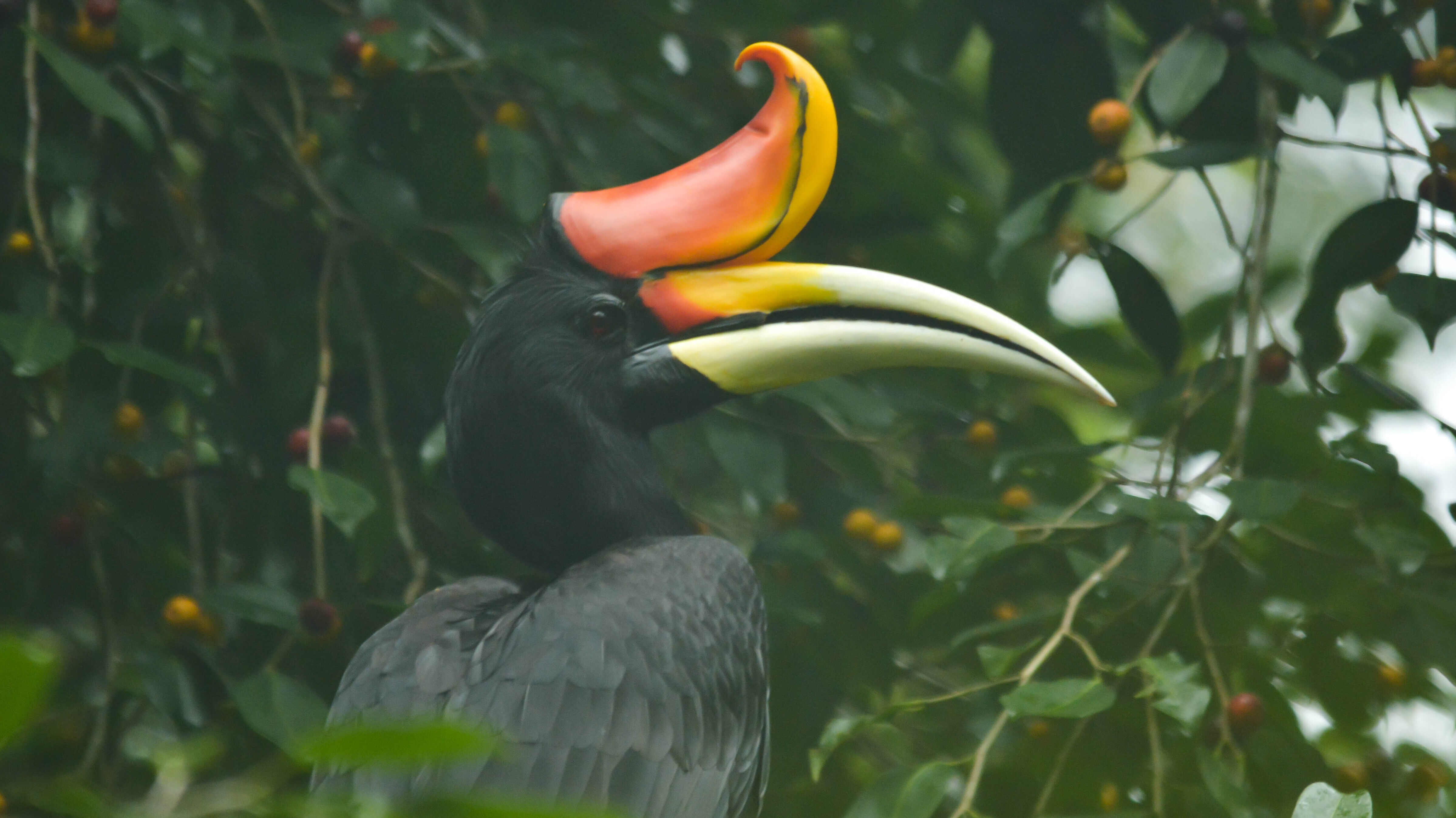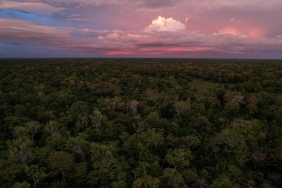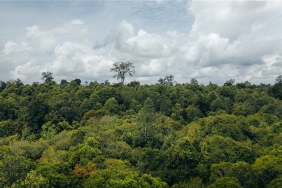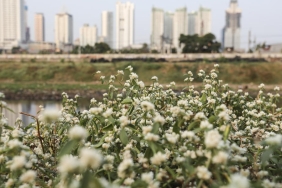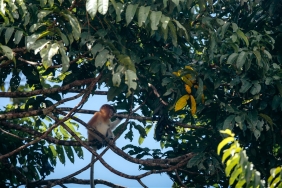THE SAD FATE OF THE HORNBILL
Indonesia is home to 13 species of hornbills, three of which are endemic: the Sumba hornbill (Ryhticeros everetti), Sulawesi hornbill (Ryhticeros cassidix) and Sulawesi hornbill (Rhabdotorrhinus exarhatus). Many hornbill species are targeted for poaching to be sold as pets or to take body parts for decoration, even though all hornbill species in Indonesia are protected animals.
One of the most trafficked hornbill species is the helmeted hornbill (Rhinoplax vigil). This bird is the largest hornbill species in Indonesia with a body length of 120 cm and a 50 cm long band on the middle tail feather. Almost all the feathers on its body are black and white, while its wingspan reaches two meters. Unlike other hornbill species whose bill (the horn-like part above the beak) is hollow, this bird has a solid bill with a dense arrangement of orange and red keratin, so this bird is also called the "Ivory Hornbill" and the part is often known as red ivory.
Populations of the helmeted hornbill are spread across Southeast Asia, including Indonesia, Malaysia, Myanmar, Thailand, Brunei Darussalam, and the Malay Peninsula. Indonesia is allegedly the country that has the habitat with the largest Ivory Hornbill population compared to other countries. In Indonesia alone, this bird is distributed in the forests of Sumatra and Kalimantan.
This species lives in lowland forests with tall trees, up to 1500 m altitude. The helmeted hornbill lives in pairs in the upper canopy of the forest and mingles with other birds and primates in fruiting trees in search of food. Its characteristics as a frugivorous bird make it an effective seed disperser in the forest. For this reason, it is often referred to as a forest farmer, and its presence is important to ensure that forest regeneration is maintained.
This bird nests in natural holes in tall trees. Its monogamous character, which is loyal to only one partner, makes its breeding rate slow. A pair of helmeted hornbills usually raise only one offspring. During the breeding period, the entrance hole of the nest is covered with food scraps and mud by the male and only a small hole is left for the male to feed the female and her young. The female will stay in the nest, shedding her feathers, while waiting for the eggs to hatch and the young to be ready to leave the nest.
The helmeted hornbill is a protected species under Law Number 5 of 1990 concerning the Conservation of Natural Resources and Ecosystems. But in fact, this species is widely poached for its ivory casque for carvings and accessories and sold on the international black market. The belief that red ivory, as the helmeted hornbill's casque is called on the black market, brings good luck and is a prestigious item and accessory, drives the demand for these products and encourages the continued poaching and trade of this species.
A 2016 study by Beastall et al suggests that the helmeted hornbill trade dates back to 1317, when a number of attributes made from carved red ivory were sent by the Boni Dynasty in Borneo to the Ming Dynasty in China. At that time, the price of red ivory was four times that of elephant ivory per kilogram. There are also reports of Ivory Hornbill heads being traded from Myanmar to Thailand for carving in the late 1800s.
Originally, red ivory was carved into belt heads in China. Over time, its use changed to accessories and decorative items such as snuff boxes, pendants, jewelry, or simply displays. The market for these red ivory-derived products was initially only China, but slowly the demand for these products came from Japan, and even to markets in Western countries. One study found that in 2013, at least 500 adult helmeted hornbills were killed every month in West Kalimantan for their tusks to fulfill black market demand.
The Indonesian government, through its police authorities, made 13 arrests and seizures in eight separate locations between March 2012 and August 2014. A total of 718 helmeted hornbill heads were seized. N.J. Collar's 2015 study "Helmeted Hornbill and the Ivory Trade: the Crisis that Came Out of Nowhere" noted that the Indonesian government arrested two red ivory dealers in Sumatra who admitted to selling 124 pieces of red ivory in the previous six months to Chinese middlemen and had a network of 30 bird poachers operating in the Leuser ecosystem. There are many other records that discuss the seizure of red ivory while it was being distributed either still at the collectors or found at the airport.
The red ivory trade is an iceberg-like phenomenon. The helmeted hornbill's faithful nature with only one mate, and the females and cubs' dependence on the males during breeding, means that if the males are shot dead by poachers, the females and cubs may die in the nest because they no longer have food.
The exact population size of the helmeted hornbill in Indonesia's forests is unknown, but the threat of poaching and the red ivory trade sends a strong signal that the helmeted hornbill's population will drastically decline. The international conservation organization IUCN has determined that the species is now Critically Endangered (CR), whereas in 2012 the species was still Near Threatened (NT). This is a strong alarm for the existence of this exotic bird species in Indonesia.
It is time to stop the practice of poaching and trade of helmeted hornbills. Not only law enforcement officials, but you can also contribute to the eradication of poaching and illegal trade of protected wildlife by becoming a watchdog. Don't hesitate to report through the BARESKRIM e-Reporting of Protected Wildlife application if you find poaching and/or trade of Helmeted Hornbills and other protected wildlife.

